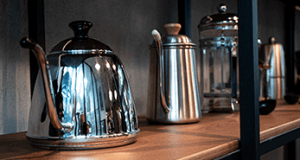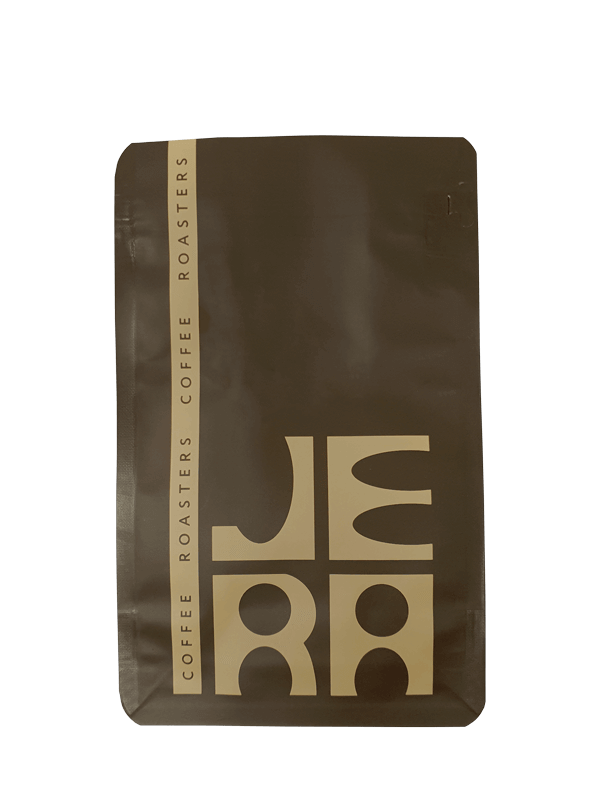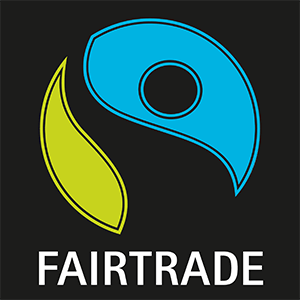קפה אינדונזי יאווה | Indonesia, West Java
קפה אינדונזי ייחודי
גוף בינוני, קצת מחוספס. מתיקות מאודנת, חמיצות של פירות יבשים עם רמז לפירות טרופיים. מצוין להכנת כל סוגי קפה פילטר
₪60.00 – ₪240.00
ברכישת כל סוגי קפה קלוי בסכום:
בין 600 ש"ח ל-1000 ש"ח עם קוד קופון "15%" תקבלו 15% הנחה
בין 1001 ש"ח ל-1500 ש"ח עם קוד קופון "25%" תקבלו 25% הנחה
מעל 1501 ש"ח עם קוד קופון "30%" תקבלו 30% הנחה
עיבוד הקפה הזה מתחיל בשטיפת הדובדבנים, שלאחריה מתבצעת תסיסה עם חיידקי לקטובצילוס במכלים אטומים למשך 2–3 ימים. לאחר סיום שלב זה, הדובדבנים עוברים דיפולפינג (הסרת הקליפה), והקפה במצב פרצ׳מנט עם השכבה הרירית (מוסילג') מתייבש על מיטות מוגבהות או יריעות למשך עוד 2–3 ימים. בשעות אחר הצהריים מתווסף ריזופוס, והיריעה נאטמת, מה שמאפשר תסיסה נוספת של הפרצ׳מנט במשך 36 שעות. לאחר מכן, הקפה מיובש למשך 7–10 ימים נוספים.
הקפה הזה מעובד בבית העיבוד הרטוב של אחוזת פרינסה (Frinsa Estate), המנוהלת על ידי וילדן מוסטופא ואשתו עטיק מוסטיקנינגטיאס.
וילדן ועאטיק התחילו את דרכם בגידול קפה בשנת 2010 באזור סינדנגרטה, ונינגאליה. במהלך השנים, הפעילות שלהם התרחבה והפכה לאחוזת Java Frinsa Estate. בעוד שרוב המגדלים באינדונזיה, אפילו בשוק הספשלטי, משתמשים בעיבוד ווט-האלינג (הסרה רטובה), השניים בחרו להתמקד דווקא בשיטת העיבוד הרטוב המלא.
אחוזת פרינסה נמצאת במערב ג'אווה, הידועה גם בשם סונדה. כל תשתיות העיבוד — בית העיבוד הרטוב, מחסן הייבוש ובית האריזה — ממוקמות בגובה של 1,400 מטר מעל פני הים, מה שמאפשר שליטה מלאה על כל תהליך הייצור: מהקטיף ועד למיון, דירוג וייצוא.
האחוזה כוללת שישה אזורי גידול עיקריים ברחבי האזור:
ונינגאליה (Weninggalih)
60 דונם פעילים (ועוד 50 דונם בהרחבה מתוכננת) בגובה של כ-1,400 מטר. הזנים הגדלים כאן: סיגררוטאנג, ליני S795, בורבור, טים-טים, אנדונגסרי, אטנג סופר, P88, בלו מאונטיין ובלוואן פסומה.
מקרוואנגי (Mekarwangi)
10 דונם בגובה של כ-1,400 מטר. הזנים: טיפיקה, סיגררוטאנג וליני S795.
הר טילו (Tilu Mountain)
10 דונם בגובה של כ-1,600 מטר. הזנים: סיגררוטאנג, ליני S795, בורבור, טים-טים, אנדונגסרי, P88 וקופיול.
פנגלנגן (Pengalengan)
20 דונם בגובה של כ-1,500 מטר. הזנים: טיפיקה, סיגררוטאנג, בורבור, אנדונגסרי ו-P88.
הר מלאבר (Malabar Mountain)
5 דונם בגובה של כ-1,600 מטר. הזנים: סיגררוטאנג, ליני S795 ואנדונגסרי.
גארות (Garut)
שטח של 4 דונם בשיתוף פעולה עם מגדלים מקומיים, בגובה של כ-1,300 מטר. הזנים: סיגררוטאנג, ליני S795, אנדונגסרי ו-P88.
קפה מג'אווה, אינדונזיה
אינדונזיה מורכבת מ-18,000 איים ונחשבת לאחת מחמש המדינות המובילות בעולם בייצור קפה. החקלאים במדינה מייצרים בין 400,000 ל-700,000 טון של קפה ירוק מדי שנה. 90% מהייצור הוא רובוסטה, ורק 10% הנותרים הם ערביקה.
הקפה האינדונזי מפורסם בזכות טעמו הבולט והייחודי. אף על פי שכמות הערביקה שגדלה במדינה אינה גדולה, היא נבדלת בטעמה הייחודי.
הטרואר המיוחד, הזנים המקומיים ושיטות העיבוד הבלתי שגרתיות — כולם תורמים לתוצאה: קפה עם טעם עשיר, חומציות חיה ודסקריפטורים ייחודיים של טעם.
ג'אווה היא אחד מהאיים הבודדים באינדונזיה שבהם מגדלים זני קפה מסוג specialty. זהו גם האי הראשון שבו הובא זן טיפיקה לאינדונזיה על ידי מתיישבים מהודו.
האקלים המתון והלח של האי, יחד עם ההרים והאדמה הוולקנית, יוצרים תנאים אידיאליים לגידול קפה איכותי.
קפה בעיבוד Honey
עיבוד ה-Honey הוא שיטה שבה מסירים את הקליפה ואת חלק מהמוצילג' (החלק הרירי של הפרי) מהדובדבן של הקפה. במהלך הייבוש, הפולים מפתחים מרקם דביק וצבע זהוב הדומה לדבש — ומכאן הגיע שם השיטה.
מיד לאחר הקטיף, החקלאים מבצעים דפולפציה — שלב שבו מסירים את הקליפה וחלק מהמוצילג' מהפולים. לאחר מכן מייבשים את הפולים עד שהם מגיעים לרמת לחות של 10–12%.
ייבוש בשיטת Honey דורש פחות זמן מאשר בעיבוד הטבעי (יבש), ובניגוד לשיטה הרטובה (שטופה), הוא חוסך במים ומאפשר קשת רחבה של פרופילי טעם.
עם זאת, האתגר בשיטת Honey הוא שלא ניתן לייבש את הפולים במייבשים מכניים: בגלל הדביקות, הפולים יידבקו זה לזה, יתקרמלו ויתייבשו בצורה לא אחידה. לכן, יש לייבש את פולי ה-Honey אך ורק על מיטות ייבוש אפריקאיות מוגבהות, מה שהופך את השיטה לתלויה מאוד בתנאי מזג האוויר.
קיים מיתוס רווח שלפיו צבע ה-Honey — לבן, צהוב, אדום או שחור — תלוי בכמות המוצילג' שנותרה על הפולים. אך למעשה, זה לא לגמרי נכון. הצבע הסופי מושפע ממספר גורמים: זן הקפה, גובה הגידול, רמת הסוכר (Brix), תהליך התסיסה לפני הדפולפציה ומהירות הייבוש.
לרוב, החקלאים אינם יודעים מראש מה יהיה צבע ה-Honey או פרופיל הטעם הסופי עד לאחר תום הייבוש. הם בוחנים את התוצאה ומציעים ליבואנים את מה שהצליחו לייצר.
בדומה לקפה בעיבוד חצי-רטוב (Semi-Washed), פולי Honey נושאים את המתיקות המודגשת שמאפיינת קפה בעיבוד טבעי, יחד עם גוף קל יותר האופייני לשיטה הרטובה (שטופה).
לרוב, יש להם גם חומציות מעוגלת יותר — פחות הדרית ויותר שוקולדית.
פייר טרייד (Fair Trade)
מטרת הסמכה זו היא לתמוך בתנאי עבודה ושכר הוגנים בחוות במדינות מתפתחות. באופן מסוים, היא מקדמת סחר הוגן, ולא מתייחסת רק לקפה אלא גם למוצרים נוספים. ההסמכה פופולרית במיוחד בקרב צרכנים במדינות מפותחות שבהן קיימת מודעות גבוהה יותר לצריכה מוסרית – בעיקר בארצות הברית ובצפון אירופה.
הסמכת Fair Trade מבטיחה שלא נעשה שימוש בעבודת ילדים בחוות, שעובדים מקבלים שכר הוגן, ושמתקיימים תקני בריאות ובטיחות בעבודה. הארגון מבצע בדיקות שוטפות בחוות המאושרות כדי לוודא שהן עומדות בדרישות.
Java Frinsa Tempe
The processing of this coffee begins with washing the cherries, followed by fermentation with Lactobacillus bacteria in tanks for 2 to 3 days. After fermentation, the cherries are pulped, and the parchment coffee is dried along with its mucilage on raised beds or tarpaulins for another 2 to 3 days. In the afternoons, Rhizopus is introduced, and the tarpaulin is sealed to allow further fermentation of the parchment for 36 hours. The final drying stage then continues for an additional 7 to 10 days.
This particular coffee is processed at the Frinsa Estate wet mill, managed by Wildan Mustofa and his wife, Atieq Mustikaningtyas.
Wildan and Atieq began their journey into coffee production in 2010, starting in the Sindangkerta, Weninggalih region. Over time, their efforts grew into what is now known as the Java Frinsa Estate. While most Indonesian coffee producers, even in the specialty sector, used wet-hulling, the couple distinguished themselves by focusing on fully washed coffees.
The Frinsa Estate is located in West Java, commonly referred to as Sunda. With all processing facilities — wet mill, dry mill, and ventilated storage — situated at 1,400 meters above sea level, they maintain full oversight of their production process, from harvesting to grading, sorting, and exporting. The estate consists of six primary coffee-growing areas across the region:
Weninggalih
Covering 60 hectares, with an additional 50 hectares planned for expansion, located at around 1,400 meters altitude. Cultivated varieties include Sigararutang, Lini S795, Borbor, Timtim, Andungsari, Ateng Super, P88, Blue Mountain, and Belawan Pesuma.
Mekarwangi
Spanning 10 hectares at an elevation of approximately 1,400 meters. Here, Typica, Sigararutang, and Lini S795 are cultivated.
Tilu Mountain
Stretching across 10 hectares at 1,600 meters altitude. The varieties grown include Sigararutang, Lini S795, Borbor, Timtim, Andungsari, P88, and Kopyol.
Pengalengan
This area covers 20 hectares and sits around 1,500 meters above sea level. Cultivated varieties include Typica, Sigararutang, Borbor, Andungsari, and P88.
Malabar Mountain
Encompassing 5 hectares at approximately 1,600 meters elevation, where Sigararutang, Lini S795, and Andungsari are grown.
Garut
A 4-hectare plot developed in collaboration with local smallholder farmers, located at roughly 1,300 meters. This area produces Sigararutang, Lini S795, Andungsari, and P88 varieties.
Coffee from Java, Indonesia
Indonesia is made up of 18,000 islands and ranks among the top five coffee-producing countries in the world. Farmers in the country produce between 400,000 and 700,000 tons of green coffee annually. 90% of this is Robusta, while the remaining 10% is Arabica.
Indonesian coffee is famous for its vibrant and distinctive flavor. Although Arabica is not grown in large quantities, it stands out noticeably with its unique taste.
The special terroir, local varieties, and unusual processing methods all contribute to the result: coffee with a rich flavor, bright acidity, and unique flavor descriptors.
Java is one of the few Indonesian islands where specialty coffee varieties are grown. Java was also the first island in Indonesia where the Typica variety was introduced by planters from India.
The island’s mild, humid climate, highlands, and volcanic soil create ideal conditions for cultivating high-quality coffee.
Honey Processed Coffee
Honey processing is a method where the skin and part of the mucilage (pulp) of the coffee cherry are removed. As the beans dry, they develop a sticky texture and a golden, honey-like color — that’s why the process got the name "honey."
Right after harvesting, farmers perform depulping — a stage where the skin and part of the fruit's mucilage are removed from the bean. The beans are then dried until they reach a moisture content of 10–12%.
The honey process requires less time to dry than natural (dry) processing, and unlike the washed method, it conserves water and allows for a wide range of flavor profiles.
However, the challenge with honey processing is that mechanical drying isn't an option: the sticky beans would clump together, caramelize, and dry unevenly. That's why honey coffee must be dried only on raised African beds, making it highly dependent on weather conditions.
There's a common myth that the color of the honey process — white, yellow, red, or black — depends on how much pulp remains on the beans. But that’s not entirely true. The final color is influenced by several factors: the coffee variety, elevation, sugar content (Brix level), fermentation process before depulping, and drying speed.
Farmers often don’t know what color or honey profile they’ll end up with until after drying. They assess the final result and offer what they’ve produced to importers.
Just like semi-washed coffee, honey-processed beans have the pronounced sweetness typical of natural coffee, combined with the lighter body of washed coffee.
They also tend to have more rounded acidity — less citrusy, more chocolatey.
Fair Trade
The goal of this certification is to support fair working conditions and wages on farms in developing countries. In a way, it advocates for fair trade and applies not only to coffee but also to other products. It is especially popular among consumers in developed countries with more conscious consumption habits — mainly in the U.S. and Northern Europe.
Fair Trade certification means that no child labor is used on the plantation, and workers receive fair wages while health and safety standards are maintained. The organization regularly inspects the conditions on certified farms to ensure compliance.











